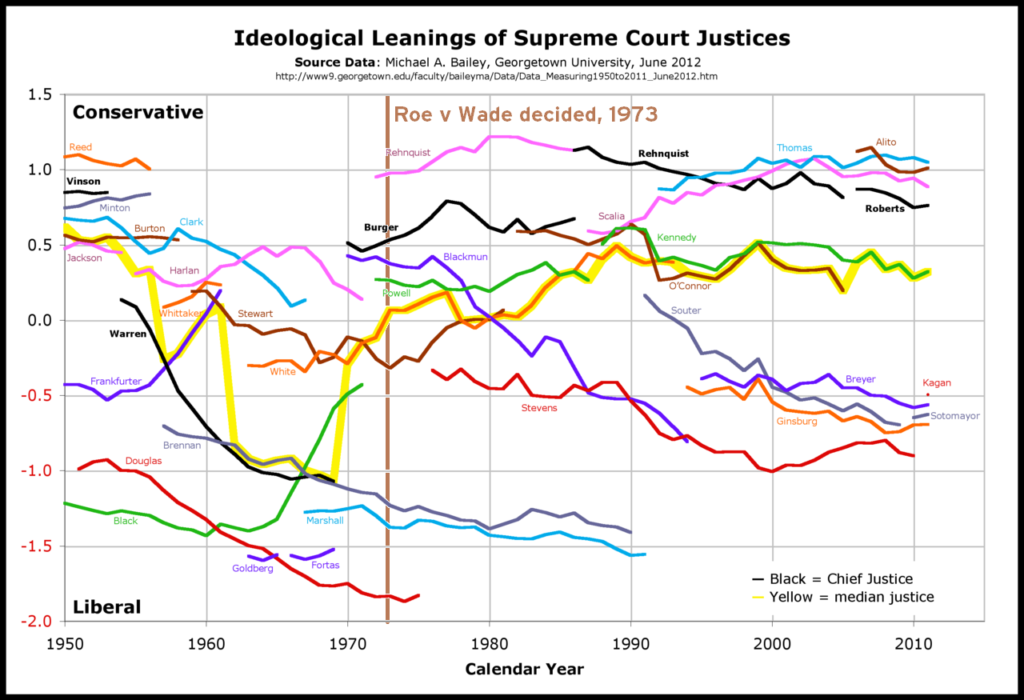The nation is abuzz with news that the Supreme Court of the United States may overturn Roe v Wade via a leaked document apparently revealing a draft of Justice Samuel Alito’s majority opinion in a Mississippi case before the court.
In the opinion, Alito is correct when he says that abortion is not in the Constitution, but historically speaking, the Founders had little reason to mention it.
At the time of the Constitutional Convention in 1787, gynecological medicine, including abortion, was generally handled by midwives and doulas.
It wasn’t until the mid 18th century when university-trained physicians saw this type of medicine as commercial competition. The monopoly on medical care was driven equally by public health and profit motive: The American Medical Association was specifically formed in 1847 to limit gynecological medicine, combat quackery and snake oil salesmen and limit treatment by medical professionals who had no formal training.

By 1900 the AMA successfully lobbied to get abortion outlawed in most U.S. states and territories, unless performed by a medical doctor, who had been — to no one’s surprise — “certified” by other AMA member physicians or medical associations in their states.
Abortion was widely practiced before the founding of the United States in a social climate where out-of-wedlock births carried significant social stigma. A quiet abortion could be seen as an acceptable alternative to carrying a fetus to term where women had few rights in adulthood. Abortifacients were commonplace in the United States in the 19th century, according to James C. Mohr’s book “Abortion in America: The origins and evolution of national policy, 1800-1900,” with between 20% to 50% of all pregnancies ending in an abortion, depending on location.
Prior to Roe v Wade in 1973, abortion restrictions and allowances were patchwork across the country. Roe codified them into one case law, giving lawmakers and voters breathing room to write legislation without fighting endless tactical battles for or against abortion across the country.
SCOTUS rulings exist in one of two categories. The first and most common is narrowly defining what laws already state. E.g., a law states all sailboat hulls must be painted blue. A sailor paints his turquoise and is fined. He sues, and SCOTUS determines if “turquoise” is “blue” when it narrowly comes only to the hulls of sailboat paint.
The other category is defining major issues determining whether the Constitution explicitly or implicitly grants or denies certain rules or rights to all Americans or to certain protected classes in certain situations, such as with Roe.
But SCOTUS rulings exist as placeholders with the tacit implication that lawmakers will follow up on such rulings and pass legislation codifying what these rulings state.
For instance, in Brown v Board of Education of Topeka, SCOTUS ruled 9-0 in 1954 that segregated classrooms were unconstitutional under the Equal Protection Clause of the 14th Amendment. Congress and state lawmakers subsequently passed state and federal legislation codifying Brown, desegregating the country and making the Brown ruling moot as it was a de facto and unassailable standard of state and federal law.
Lawmakers never did this with Roe on a federal level. Liberals had a friendly majority on the court from 1973 until 1986, control of the Senate until 1981 and House until 1992.

Pro-choice lawmakers could have gotten the votes required to codify abortion rights into federal law but never did so. Instead, by hanging all hope on a single court ruling, lawmakers left open the door to be overturned. That’s what happens when court rulings are not protected by subsequent legislation.

Graphic from https://www.spokesman.com/stories/2020/jun/25/control-house-and-senate-1900/
For the last 49 years Republican lawmakers have fired up single-issue voters with a promise they would overturn Roe, getting other agendas passed while paying lip service to pro-life talking points. Likewise, Democratic lawmakers stirred up their voters by vowing to protect what they claim is a woman’s right to choose but failing to put rhetoric into action.
Both parties collected billions of dollars in campaign donations over 49 years while failing to pass any sort of federal legislation in the wake of Roe that would find a compromise between both sides. Instead lawmakers on both sides watched pro-choice and pro-life activists to fight surface battles about freedom, privacy, morality and bodily autonomy, while lawmakers cashed the checks and got reelected.
The leaked ruling could have come from an angry liberal law clerk — though tactical pointless when losing a 6-3 vote — or a conservative clerk aiming to keep a wavering justice in step with a narrow 5-4 opinion, lest a conservative side with liberals to uphold Roe and commit “partisan treason” — the dumbest of modern American sins.
If it’s a clerk, it’s career suicide and epically unethical, but not illegal and likely faces no real legal penalty. Leaking the document now does not change what will happen when the final ruling overturns Roe in July.
It does, however, threaten the integrity, trust and privacy of the justices’ deliberations, which are supposed to be private. Overturning Roe changes the national conversation, which Americans refused to address directly for 49 years.
Christopher Fox Graham
Managing Editor
“The Supreme Court has voted to strike down the landmark Roe v. Wade decision, according to an initial draft majority opinion written by Justice Samuel Alito circulated inside the court and obtained by POLITICO“.
scotus-initial-draftThe 1973 Roe v. Wade opinion granted abortion protections under the right to privacy per the 14th Amendment and the 9th Amendment reserving the rights of the people to which the government could not overrule, “This right of privacy, whether it be founded in the Fourteenth Amendment’s concept of personal liberty and restrictions upon state action, as we feel it is, or … in the Ninth Amendment’s reservation of rights to the people, is broad enough to encompass a woman’s decision whether to terminate her pregnancy.”
— Roe, 410 U.S. at 153
But notably did not grant absolute right to privacy, “A State may properly assert important interests in safeguarding health, maintaining medical standards, and in protecting potential life. At some point in pregnancy, these respective interests become sufficiently compelling to sustain regulation of the factors that govern the abortion decision. … We, therefore, conclude that the right of personal privacy includes the abortion decision, but that this right is not unqualified and must be considered against important state interests in regulation.”
— Roe, 410 U.S. at 154.
In a concurrence, Chief Justice Warren Burger deferred the decision of abortion to doctors, suggesting that if two doctors agreed an abortion was warranted and should proceed, the state should not interfere: “I do not read the Court’s holdings today as having the sweeping consequences attributed to them by the dissenting Justices; the dissenting views discount the reality that the vast majority of physicians observe the standards of their profession, and act only on the basis of carefully deliberated medical judgments relating to life and health. Plainly, the Court today rejects any claim that the Constitution requires abortions on demand.”
Associate Justice William Rehnquist (later chief justice) dissented based on the history of anti-abortion laws preceding the 14th Amendment.
Meanwhile Associate Justice Byron White dissented by stating the court exceeded its power in weighing whether a fetus or a pregnant woman had more rights that the other: “I find nothing in the language or history of the Constitution to support the Court’s judgment. The Court simply fashions and announces a new constitutional right for pregnant women and, with scarcely any reason or authority for its action, invests that right with sufficient substance to override most existing state abortion statutes. The upshot is that the people and the legislatures of the 50 States are constitutionally disentitled to weigh the relative importance of the continued existence and development of the fetus, on the one hand, against a spectrum of possible impacts on the woman, on the other hand.”
Roe-v-Wade


















